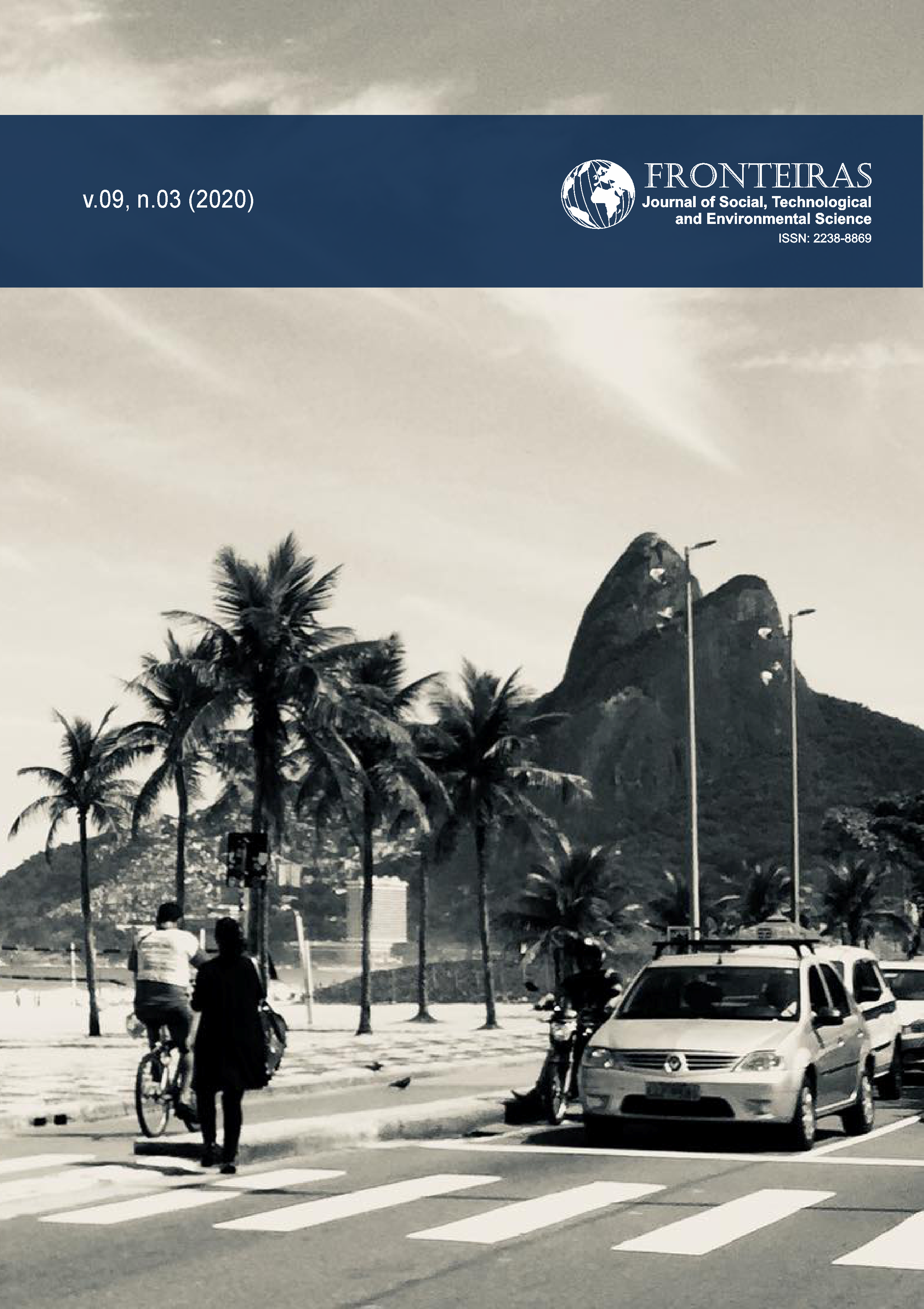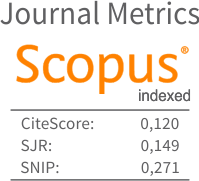Frivolous Ecotourism with Sea Turtles in Mexico: Reflections from Sustainability
DOI:
https://doi.org/10.21664/2238-8869.2020v9i3.p261-285Keywords:
Sustainable Development, Marine Turtle Management in Mexico, Conservation, Legal FrameworkAbstract
Ecotourism is considered an activity that seeks conservation of species and ecosystems while promoting socio-economic development of communities where it takes place. However, in many cases, ecotourism practices with sea turtles are far from having these positive impacts, becoming another problem to species on the target of touristic activity due to the lack of surveillance and poor management practices. Both problems emerge from the lack of adequate planning for case study projects, which downplays both the scientific knowledge on the species, and the real needs and conditions faced by the communities where ecotourism activities are carried out around the turtle’s birth, nesting and watching on the beach and in the sea. The regulatory framework concerned on the walkthrough of these projects does not have effective instruments for their operation. Based on the review of scientific articles, government reports, interviews and field observation, we present a critique analysis on what bad practices characterize various services that abuse the growing popularity of ecotourism dedicated to attend marine turtles in Mexico. It is evident that by training the providers of services and delivering education to tourists (both based on scientific knowledge), besides seriously planning for ecotourism activities, adhering to the law, and having all actors involved in real commitments to conservation, would allow these bad practices to be surmounted. The result would lead to ecotourism experiences consistent with the objectives and ethical principles that theoretically rule ecotourism transcending from discourse to facts, this would benefit both sea turtles and coastal communities that could find in them a sustainable and valuable non consumptive resource.
References
Alongi, Daniel M. 1998. Coastal Ecosystem Processes (CRC Marine Science Book 15). Boca Raton: CRC Press.
ANDECO. 2007. “Código Ético de Ecoturismo.” Ecoturismoenandalucia.Org. 2007. https://www.ecoturismoenandalucia.org/Esp/codigo_etico.php3.
Bjorndal, Karen A., and J. B. C. Jackson. 2003. “Roles of Sea Turtles in Marine Ecosystems: Reconstructing the Past.” In The Biology of Sea Turtles, edited by Peter L. Lutz, John A. Musick, and Jeanette Wyneken, 2:259–73. Boca Raton: CRC Press.
Boo, Elizabeth. 1990. Ecotourism: The Potentials and Pitfalls. Lancaster: World Wildlife Fund and U.S. Agency for Intemational Development; Wickersham Printing Company.
Bouchard, S. S., and Karen A. Bjorndal. 2000. “Sea Turtles as Biological Transporters of Nutrients and Energy from Marine to Terrestrial Ecosystems.” Ecology 81 (8): 2305–13.
Brandon, Katrina. 1993. Bellagio Conference on Ecotourism: Briefing Book. New York: Rockefeller Foundation.
Bringas Rábago, Nora L., and Lina Ojeda Revah. 2000. “El Ecoturismo ¿una Nueva Modalidad Del Turismo de Masas?” Economía, Sociedad y Territorio 2 (7): 373–403.
Brown, A. C. 2001. “Biology of Sandy Beaches.” In Encyclopedia of Ocean Sciences, edited by J. H. Steele, S. A. Thorpe, and K. K. Turekian, 5:2496–2504. London: Academic Press.
Carr, Archie. 1987. “New Perspectives on the Pelagic Stage of Sea Turtle Development.” Conservation Biology 1 (2): 103–21. https://doi.org/10.1111/j.1523-1739.1987.tb00020.x.
CDI. 2015. “Turismo Alternativo En Zonas Indígenas.” Cdi.Gob.Mx. Comisión Nacional para el Desarrollo de los Pueblos Indígenas. 2015. http://www.cdi.gob.mx/turismo/.
Ceballos-Lascurain, H. 1996. Tourism, Ecotourism, and Protected Areas: The State of Nature-Based Tourism around the World and Guidelines for Its Development. Gland, Switzerland: IUCN Publication Services Unit.
CITES. 2004. “Convention International Trade in Endangered Species of Wild Fauna and Flora.” Cites.Org. 2004. https://www.cites.org/eng/disc/text.php.
DOF. 1990. “ACUERDO Por El Que Se Establece Veda Total Para Todas Las Especies y Subespecies de Tortugas Marinas En Aguas de Jurisdicción Nacional de Los Litorales Del Océano Pacífico, Golfo de México, Mar Caribe.” México: Diario Oficial de la Federación.
———. 2000. “Ley General de Vida Silvestre.” México: Diario Oficial de la Federación.
———. 2010. “Norma Oficial Mexicana NOM-059-SEMARNAT-2010, Protección Ambiental-Especies Nativas de México de Flora y Fauna Silvestres-Categorías de Riesgo y Especificaciones Para Su Inclusión, Exclusión o Cambio-Lista de Especies En Riesgo.” México: Diario Oficial de la Federación.
———. 2012. “Norma Oficial Mexicana NOM-162-SEMARNAT-2012, Que Establece Las Especificaciones Para La Protección, Recuperación y Manejo de Las Poblaciones de Las Tortugas Marinas En Su Hábitat de Anidación.” México: Diario Oficial de la Federación.
———. 2018. “Código Penal Federal.” México: Poder Ejecutivo Federal. Estados Unidos Mexicanos. Secretaría de Gobernación.
Eckert, Karen L., Karen A. Bjorndal, Federico Alberto Abreu-Grobois, and Marydele Donnelly. 1999. Research and Management Techniques for the Conservation on Sea Turtles. Pennsylvania: IUCN/SSC Marine Turtle Specialist Group Publication No.4. https://www.iucn-mtsg.org/techniques-manual-english.
Epperly, Sheryan, and Jack Frazier. 2000. “Resolutions of the Members of the 20th Annual Symposium on Sea Turtle Biology and Conservation.” Marine Turtle Newsletter 88: 22–26. http://www.seaturtle.org/mtn/archives/mtn88/mtn88p22.shtml.
Escobar, Arturo, and Andreu Viola. 2000. “El Lugar de La Naturaleza y La Naturaleza Del Lugar: ¿globalización o Posdesarrollo?” In La Colonialidad Del Saber: Eurocentrismo y Ciencias Sociales, Perspectivas Latinoamericanas, edited by E. Lander, 113–14. Buenos Aires: UNESCO, CLACSO.
Farrell, Bryan H., and Dean Runyan. 1991. “Ecology and Tourism.” Annals of Tourism Research 18 (1): 26–40. https://doi.org/10.1016/0160-7383(91)90037-C.
Gudynas, Eduardo. 2011. “Desarrollo y Sustentabilidad Ambiental: Diversidad de Posturas, Tensiones Persistentes.” In La Tierra No Es Muda: Diálogos Entre El Desarrollo Sostenible y El Postdesarrollo, edited by A. Matarán Ruíz and F. López Castellano, 69–96. Granada: Universidad de Granada.
Guerrero Rodríguez, Rafael. 2010. “Ecoturismo Mexicano: La Promesa, La Realidad y El Futuro. Un Análisis Situacional Mediante Estudios de Caso.” El Periplo Sustentable, no. 18: 37–67. https://rperiplo.uaemex.mx/article/view/5030.
Hall, Michael C., and Brenda Rudkin. 1993. “Ecotourism as Apropíate Tourism? A Case Study from Solomon Islands.” In XIII Congreso Internacional de Ciencias Antropológicas y Etnológicas, UNICAE. México.
Harvey, David. 2014. Diecisiete Contradicciones y El Fin Del Capitalismo. Quito: IAEN.
Ibáñez, Reyna, and Ismael Rodríguez Villalobos. 2014. “Tipologías y Antecedentes de La Actividad Turística: Turismo Tradicional y Turismo Alternativo.” In Medio Ambiente y Política Turística En México: Tomo I - Ecología, Biodiversidad y Desarrollo Turístico, edited by Antonina Ivanova and Reyna Ibánez, 17–33. México: SEMARNAT-INE.
International Ecotourism Society. 2007. “What Is Ecotourism?” Ecotourism.Org. 2007. http://www.ecotourism.org/what-is-ecotourism.
IUCN. 2007. “Red List of Threatened Species.” Iucnredlist.Org. International Union for Conservation of the Nature (IUCN) Gland. 2007. https://www.iucnredlist.org/.
Jackson, J. B. C. 1997. “Reefs since Columbus.” Coral Reefs 16 (Suppl.): S23–32.
Mader, R. 2005. “Ecotourism Champion: A Conversaton with Hector Ceballos Lascurain.” Planeta.Com. 2005. http://www.planeta.com/ecotravel/weaving/hectorceballos.
Marcovaldi, Maria Angela Guagni dei, and Joca C. A. Thome. 1999. “Reducing Threats to Turtles.” In Research and Management Techniques for the Conservation of Sea Turtles, edited by Karen L. Eckert, Karen A. Bjorndal, Federico Alberto Abreu-Grobois, and Marydele Donnelly, 165–68. Pennsylvania: IUCN/SSC Marine Turtle Specialist Group Publication No. 4.
McLachlan, A., and A. C. Brown. 2006. The Ecology of Sandy Shores. Burlington: Academic Press.
McLachlan, A., T. Erasmus, A.H. Dye, T. Wooldridge, G. Van der Horst, G. Rossouw, T.A. Lasiak, and L. McGwynne. 1981. “Sand Beach Energetics: An Ecosystem Approach towards a High Energy Interface.” Estuarine, Coastal and Shelf Science 13 (1): 11–25. https://doi.org/10.1016/S0302-3524(81)80102-8.
Moscardo, Gianna. 1998. “Interpretation and Sustainable Tourism: Functions, Examples and Principles.” Journal of Tourism Studies 9 (1): 2–13.
Murray, Ivan, Onofre Rullan, and Macià Blázquez. 2005. “Las Huellas Territoriales de Deterioro Ecológico. El Trasfondo Oculto de La Explosión Turística En Baleares.” Scripta Nova: Revista Electrónica de Geografía y Ciencias Sociales 9 (199): 181–204.
Nichols, Wallace J., Louise B. Brooks, M. López, and Jeffrey A. Seminoff. 2001. “Record of Pelagic East Pacific Green Turtles Associated with Macrocystis Mats near Baja California Sur, Mexico.” Marine Turtle Newsletter 93: 10–11.
Nichols, Wallace J., A. Resendi, Jeffrey A. Seminoff, and B. Resendiz. 2000. “Transpacific Loggerhead Turtle Migration Monitored with Satellite Telemetry.” Bulletin of Marine Science 67: 937–47.
OMT. 2002. “Ecoturismo y Áreas Protegidas.” Unwto.Org. Organización Mundial de Turismo. 2002. http://www2.unwto.org/es/content/ecoturismo-y-areas-protegidas.
SECTUR. 2002. Cómo Desarrollar Un Proyecto de Ecosturismo. México: Secretaría de Turismo. https://cedocvirtual.sectur.gob.mx/janium/Documentos/002007.pdf.
———. 2014. “Boletín Cuatrimestral de Turismo.” México.
Seminoff, Jeffrey A., J. Alvarado, C. Delgado, J. L. Lopez, and G. Hoeffer. 2002. “First Direct Evidence of Migration by an East Pacific Green Sea Turtle from Michoacán, México, to a Foraging Ground on the Sonoran Coast of the Gulf of California.” Southwestern Naturalist 47: 314–16.
Seminoff, Jeffrey A., A. Resendiz, and Wallace J. Nichols. 2002. “Diet of the East Pacific Green Turtle, Chelonia Mydas, in the Central Gulf of California, México.” Journal of Herpetology 36: 447–53.
Stonich, Susan C. 1998. “Political Ecology of Tourism.” Annals of Tourism Research 25 (1): 25–54.
Troëng, Sebastian, and Carlos Drews. 2004. Hablemos de Plata. Aspectos Económicos Del Uso y Conservación de Las Tortugas Marinas. Suiça: WWF. http://www.widecast.org/Resources/Docs/Troeng_and_Drews_2004_Money_Talks_Hablemos_de_plata_ESP.pdf.
Downloads
Published
How to Cite
Issue
Section
License
This journal offers immediate free access to its content, following the principle that providing free scientific knowledge to the public, we provides greater global democratization of knowledge.
As of the publication in the journal the authors have copyright and publication rights of their articles without restrictions.
The Revista Fronteiras: Journal of Social, Technological and Environmental Science follows the legal precepts of the Creative Commons - Attribution-NonCommercial-ShareAlike 4.0 International. 


